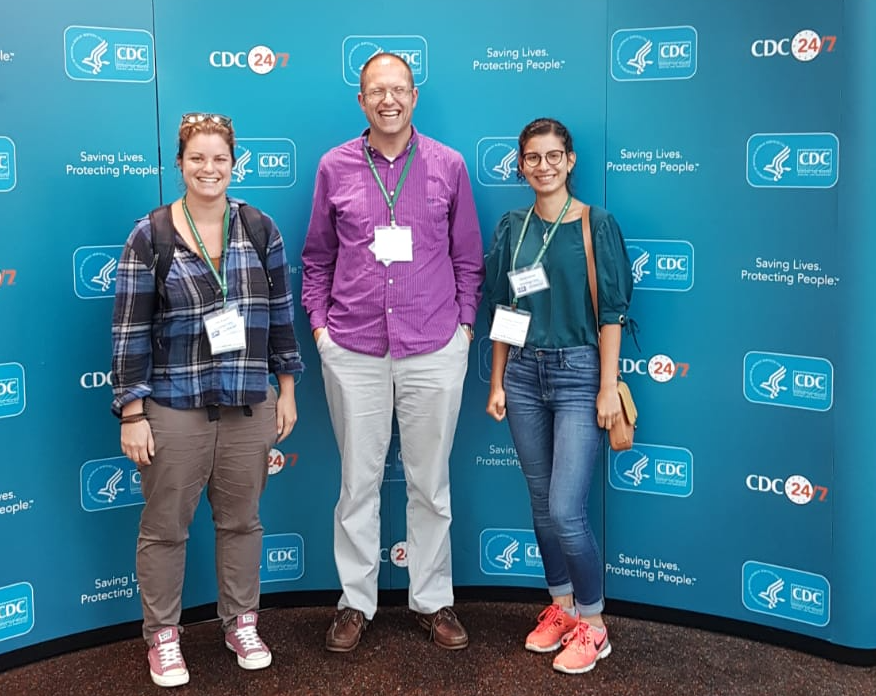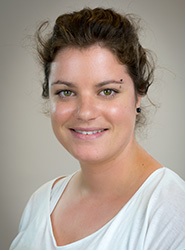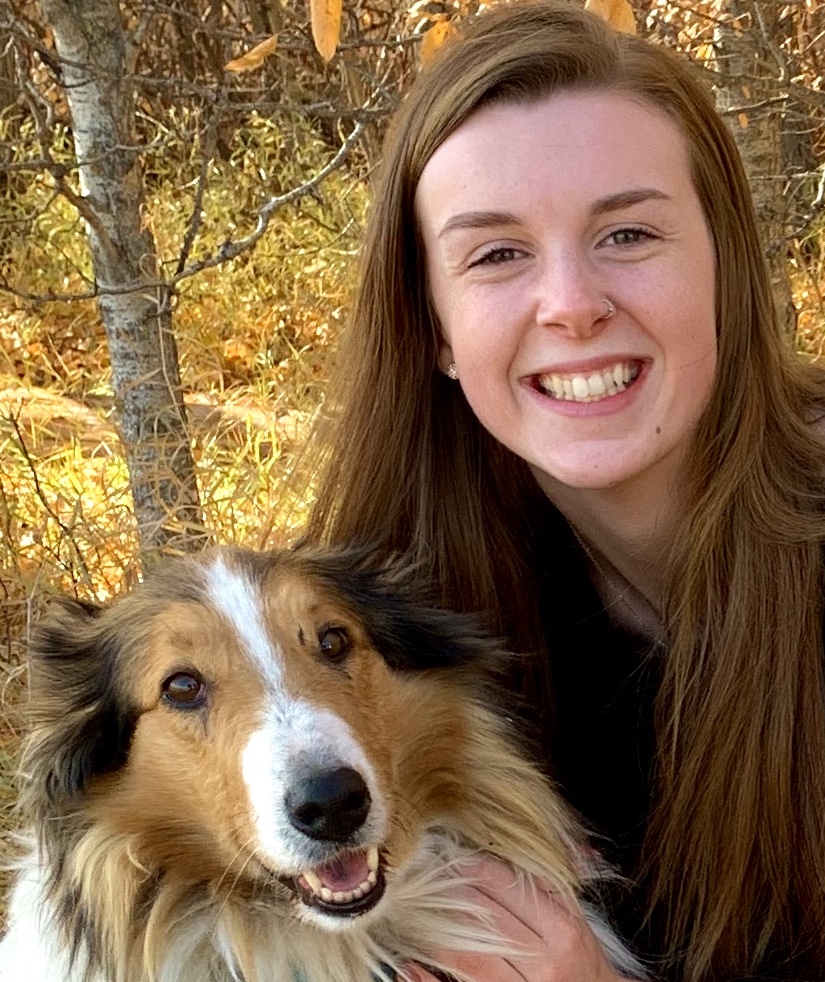
Dr. Maarten Voordouw BSc, PhD
Assistant Professor Veterinary MicrobiologyI am an assistant professor in the Department of Veterinary Microbiology at the WCVM as of July 2018. Our research group studies the ecology of ticks and tick-borne diseases in Canada.
- Address
- Western College of Veterinary Medicine, University of Saskatchewan 52 Campus Drive, Saskatoon, Saskatchewan S7N 5B4 Canada
Biography
My research interests include host-parasite interactions, vector-borne diseases, multiple-strain pathogens and the ecology of mixed infections, Lyme disease and other tick-borne infections. From 2011 to 2018, I was an assistant professor in the Institute of Biology at the University of Neuchâtel in Neuchâtel, Switzerland where my research was focussed on the ecology of Lyme disease. From 2009 to 2010, I was a postdoc in the lab of Dr Dustin Brisson at the University of Pennsylvania in Philadelphia, USA. This postdoctoral experience introduced me to the world of ticks and tick-borne diseases.
Education
BSc Biology, University of Victoria, Canada
PhD Biology, University of Victoria, CanadaFunding
Our research group is currently being funded by the Saskatchewan Health Research Foundation (SHRF), the Natural Sciences and Engineering Research Council of Canada (NSERC), the Canadian Lyme Disease Foundation (CanLyme), and the WCVM Wildlife Health Research Fund.
eTick
News
05 May 2021: Brooklyn Bourgeois joins the Tick and Lyme lab as a summer research student. Welcome Brooklyn!
30 April 2021: Alexandra has been awarded a CAHF (Companion Animal Health Fund) Graduate Tuition Scholarship Award. Congratulations Alexandra!
29 April 2021: Georgia Hurry published the manuscript of her summer research project in the journal 'Scientific Reports'. Congratulations, Georgia!
22 February 2021: Cindy Bregnard published the second chapter of her PhD thesis in the journal 'Parasites and Vectors'. Congratulations, Cindy!
11 February 2021: Dolores Genne published the third chapter of her PhD thesis in the ISME Journal. Congratulations Dolores!
05 February 2021: Brooklyn Bourgeois was awarded an Interprovincial Summer Student Research Award for the summer of 2021. Congratulations Brooklyn!
02 February 2021: Georgia Hurry was awarded the 2020 Veterinary Microbiology Faculty Award for Undergraduate Research for her NSERC USRA summer research project. Congratulations Georgia!
01 February 2021: Eva-Maria Uhlemann joins the Tick and Lyme lab as a technician. Welcome Eva!
18 December 2020: Cody Koloski was awarded a Dean's Scholarship from the University of Saskatchewan. Congratulations Cody!
27 October 2020: Cody Koloski has been accepted into the Graduate Program of the Department of Veterinary Microbiology! Cody will start his PhD in the Tick and Lyme lab in the summer of 2021. Welcome Cody!
01 November 2020: Prasobh Raveendran Thampy starts a full-time job in the College of Dentistry. Congratulations Prasobh and thanks for all your excellent work in the Tick and Lyme lab!
01 September 2020: Georgia Hurry joins the Tick and Lyme lab as a research technician for 1 year. Welcome Georgia!
24 August 2020: Alexandra Foley-Eby joins the Tick and Lyme lab as a doctoral student. Welcome Alexandra!
21 August 2020: Dolores Genne successfully defended her PhD at the University of Neuchatel. Congratulations, Dolores!
13 August 2020: Cindy Bregnard published the first chapter of her PhD thesis in the journal 'Parasites and Vectors'. Congratulations, Cindy!
Research Area(s)
Research Topics
Study system: My research is focussed on the ecology of Lyme disease. Lyme disease is the most common vector-borne disease in the northern hemisphere (~130,000 human cases per year). The causative agents of Lyme disease are spirochete bacteria that belong to the Borrelia burgdorferi sensu lato (sl) genospecies complex. Ticks in the genus Ixodes transmit these tick-borne pathogens between vertebrate hosts. The main reservoir hosts for B. burgdorferi sl include small mammals and birds whereas humans, companion animals, and livestock are accidental hosts. Below I describe current and past research topics of interest.
The factors that maintain strain diversity in pathogen populations (current and future research topic): Many pathogen populations consist of genetically diverse strains. A fundamental question is to understand the ecological factors that allow this strain diversity to persist. Lyme borreliosis (LB) is caused by a tick-borne spirochete bacterium. In areas where LB is endemic, the ecosystem often contains a dozen or more strains. Using a long-term field study in Neuchâtel Switzerland, we showed that the local population of ticks contained over 21 different strains of the most common LB pathogens (B. afzelii and B. garinii). Some strains are persistently common whereas other strains are persistently rare, and we want to understand why [1, 2]. There is substantial variation in transmission efficiency between strains of B. afzelii, which is related to their frequency in the field [2, 3]. Strain diversity in pathogen populations can have important implications for public health such as diagnostics and vaccine development. The study of this genetic diversity can help with the development of effective control strategies.
Strain-specific immune responses and strain diversity (current and future research topic): The immune response in the vertebrate host plays a critical role in mediating interactions between strains and in maintaining strain diversity. We are interested in using Borrelia burgdorferi pathogens as a model system to study how the strain-specific antibody responses of the vertebrate host maintain strain diversity in nature. We showed that female bank voles transmit strain-specific antibodies to their offspring that protect them against ticks that are infected with the same strain but not against ticks carrying a different strain [4]. This intergenerational transfer of strain-specific immunity could play an important role in reducing competition between strains and in maintaining strain diversity.
Interactions between pathogen strains in mixed infections (current and future research topic): Mixed infections or co-infections are when a host is infected with multiple pathogen strains. In mixed infections, interactions between strains can have important consequences for the transmission success and prevalence of individual strains. We used the tick-borne pathogen, Borrelia afzelii, as a model system to study interactions between strains in both the vertebrate host and the arthropod vector. We have shown that mixed infections are common in wild ticks [1, 5]. We used experimental infections to show that competition between strains reduces their host-to-tick transmission success and their abundance in the tick vector [6, 7]. We are investigating whether co-infection in the tick vector influences the strain transmission success from the tick to the host.
Co-feeding transmission (past research topic): Co-feeding transmission of vector-borne pathogens occurs when the vector is transferred directly between arthropod vectors that feed in close proximity to each other on the same host. This mode of transmission has been demonstrated in a number of vector-borne pathogens such as West Nile virus, tick-borne encephalitis virus, and LB pathogens [8]. Our research group has made a number of contributions to co-feeding transmission of LB pathogens [3, 8, 9, 10].
References
- Durand J, Jacquet M, Paillard L, Rais O, Gern L, Voordouwa MJ. Cross-immunity and community structure of a multiple-strain pathogen in the tick vector. Appl Environ Microbiol. 2015;81 22:7740-52.
- Durand J, Jacquet M, Rais O, Gern L, Voordouw MJ. Fitness estimates from experimental infections predict the long-term strain structure of a vector-borne pathogen in the field. Scientific Reports. 2017;7 1:1851.
- Tonetti N, Voordouw MJ, Durand J, Monnier S, Gern L. Genetic variation in transmission success of the Lyme borreliosis pathogen Borrelia afzelii. Ticks Tick Borne Dis. 2015;6 3:334-43.
- Gomez-Chamorro A, Heinrich V, Sarr A, Roethlisberger O, Genné D, Bregnard C, et al. Maternal antibodies provide strain-specific protection against infection with the Lyme disease pathogen in bank voles. Appl Environ Microbiol. 2019:AEM.01887-19.
- Durand J, Herrmann C, Genné D, Sarr A, Gern L, Voordouw MJ. Multistrain infections with Lyme borreliosis pathogens in the tick vector. Appl Environ Microbiol. 2017;83 3.
- Genné D, Sarr A, Gomez-Chamorro A, Durand J, Cayol C, Rais O, et al. Competition between strains of Borrelia afzelii inside the rodent host and the tick vector. P Roy Soc B-Biol Sci. 2018;285 1890.
- Genné D, Sarr A, Rais O, Voordouw MJ. Competition between strains of Borrelia afzelii in immature Ixodes ricinus ticks is not affected by season. Front Cell Infect Microbiol. 2019;9 431.
- Voordouw MJ. Co-feeding transmission in Lyme disease pathogens. Parasitology. 2015;142 2:290-302.
- Jacquet M, Durand J, Rais O, Voordouw MJ. Strain-specific antibodies reduce co-feeding transmission of the Lyme disease pathogen, Borrelia afzelii. Environ Microbiol. 2016;18 3:833-45.
- Belli A, Sarr A, Rais O, Rego ROM, Voordouw MJ. Ticks infected via co-feeding transmission can transmit Lyme borreliosis to vertebrate hosts. Scientific Reports. 2017;7 1:5006.
People

Cindy Bregnard (doctoral student)

Cindy Bregnard is doing her PhD under the supervision of Maarten Voordouw. She is based at the University of Neuchatel in Neuchatel, Switzerland.
Biography of Cindy Bregnard: Cindy Bregnard is a doctoral student who started her PhD in August 2016 at the University of Neuchâtel under the supervision of Dr Maarten Voordouw. This became a long-distance supervisory relationship when Maarten moved to the University of Saskatchewan. While Maarten remains her main PhD thesis supervisor, Dr Jacob Koella is her co-supervisor at the University of Neuchâtel. Cindy did her BSc and MSc in Biology at the University of Neuchâtel. She did her MSc under the supervision of Maarten where she worked on a fungal pathogen, Batrachochytrium dendrobatidis (Bd), which causes an infectious disease named chytridiomycosis in amphibian hosts. Cindy’s salary is funded by the Canton of Neuchâtel and she is responsible for teaching practical classes in histology to medical students and biology students. Cindy’s website at the University of Neuchâtel is as follows: https://www.unine.ch/biologie/home/collaborateurs/laboratoire-decologie-et-evoluti/cindy-bregnard.html
Cindy’s PhD thesis topic: Lyme disease is caused by spirochete bacteria of the Borrelia burgdorferi sensu lato (sl) genospecies complex. In Europe, these tick-borne pathogens are transmitted among vertebrate hosts by the sheep tick (Ixodes ricinus). The purpose of my PhD is to investigate the ecological factors that determine the abundance of I. ricinus ticks and the risk of Lyme disease. I am analyzing a 15-year data set that surveyed the abundance of I. ricinus ticks each month at four different elevations on Chaumont Mountain, in Neuchatel, Switzerland. I have discovered that seed production events by beech trees drive the abundance of I. ricinus nymph 2 years later at our study location. In high years of beech seed production, the abundance of rodents increases the following year, which increases the feeding success of I. ricinus larvae, which moult into nymphs that become active 2 years after the masting event. The effect of tree masting on the abundance of Ixodes ticks was first shown in the USA, but our long-term study is one of the first studies to show this phenomenon for I. ricinus in Europe. We are now testing whether these masting events also influenced the abundance of ticks infected with B. burgdorferi sl, and hence the risk of Lyme disease.
Eva Uhlemann (technician)

Eva Uhlemann is a technician in the Voordouw Tick & Lyme Lab.
Biography of Eva Uhlemann: Eva was trained as Research Technician in Biology at the University of Osnabrück in Germany. After completing her training, she stayed at Uni OS for 13 years working on the purification, functional reconstitution, and activity assays of membrane transport proteins in the laboratory of Dr. Karlheinz Altendorf in the Microbiology department. In 2002, Eva crossed the Atlantic and continued her work on membrane transport proteins and ATP synthase in the laboratory of Dr. Robert Fillingame in the Department of Biomolecular Chemistry at the University of Wisconsin. In 2005 Eva moved with her family to Saskatoon. Since 2006 Eva has worked on the structure and function of ATP synthase, bacterial multidrug transporters, and copper transport proteins in the Dmitriev lab in the Department of Biochemistry at the University of Saskatchewan. In 2014-17 Eva went back to the University of Wisconsin to expand her technical skills in eukaryotic molecular genetics, membrane transport assays and selective labeling strategies for NMR in the Departments of Genetics, supervision of Dr. Ahna Skop and Biochemistry, supervision of Dr. Katherine Henzler-Wildman. In February of 2021 Eva joined the Voordouw lab at the WCVM, Department of Veterinary Microbiology, to work on Lyme disease caused by the bacterium Borrelia burgdorferi.
Christopher Zinck (doctoral student)

Chris Zinck is doing his PhD in the Voordouw Tick & Lyme Lab.
Biography of Christopher Zinck: Chris started his PhD in May 2019 under the supervision of Dr. Maarten Voordouw. Chris did his BSc and MSc in biology at Mount Allison University, in New Brunswick, Canada. His MSc was supervised by Dr. Vett Lloyd and investigated the infection prevalence of two tick-borne pathogens, Borrelia burgdorferi and Borrelia miyamotoi, in wildlife in Atlantic Canada, with a primary focus on New Brunswick. This research involved the collection of roadkill and other sources of deceased wildlife to assess the spread of Borreliathrough wildlife hosts, as this helps inform the potential for endemic tick populations to be exposed to the pathogens. Chris also worked as a lab technologist under Dr. Vett Lloyd investigating Leptospirosis seropositivity in New Brunswick canines, a project funded by the Public Health Agency of Canada. Chris’s stipend at the WCVM is funded by the Dean’s Scholarship awarded by the College of Graduate and Post-Graduate Studies (CGPS).
Chris’s PhD thesis topic: In North America, Lyme disease is caused by the bacterium Borrelia burgdorferi, which is vectored among vertebrate hosts by the blacklegged tick (Ixodes scapularis). Borrelia burgdorferi consists of many unique strains that vary in their potential infectivity, i.e. their likelihood of being transmitted from a tick to a reservoir, and vice-versa. This project will investigate variation in life history traits among Canadian strains of B. burgdorferi. Life history traits investigated include virulence (i.e. damage done to the host), abundance in host tissues, and host-to-tick transmission. We predict that strains that establish higher abundance in host tissues (especially the skin) will have higher host-to-tick transmission and induce more virulence in their host organism. This project will help our understanding of how natural selection shapes the life history strategy of this important tick-borne pathogen.
Alexandra Foley-Eby (doctoral student)

Alexandra Foley-Eby is doing her PhD in the Voordouw Tick & Lyme Lab.
Biography of Alexandra Foley-Eby: Alex started her PhD in September 2020 under the supervision of Dr. Maarten Voordouw. Alex attained her Bachelor of Science, with Honours, at Dalhousie University in Halifax, Nova Scotia in 2016. Under the supervision of Dr. Tatiana Rossolimo, her Honours thesis was focussed on the prevalence of Rickettsia spp. and Bartonella spp. bacteria in Ctenocephalides felis (cat fleas) in the Halifax Regional Municipality. From 2016 to 2018 she completed her Master of Science, under the supervision of Dr. Vett Lloyd, at Mount Allison University in Sackville, New Brunswick. Her Masters project studied the infection prevalence of Borrelia burgdorferi in ticks and the seroprevalence of Borrelia exposure in dogs on Prince Edward Island. A summary of the results from Alexandra’s MSc work will be published in the Canadian Veterinary Journal in October 2020. Alex’s stipend at the WCVM is funded by the New Faculty Graduate Student Support Program graduate scholarship that is awarded by the College of Graduate and Post-Graduate Studies (CGPS).
Alex’s PhD thesis topic: In nature, populations of the zoonotic tick-borne bacterium Borrelia burgdorferi, which is the causative agent of Lyme disease, consist of multiple strains. Vertebrate hosts are often infected with multiple strains of B. burgdorferi, a phenomenon referred to as mixed infections or co-infections. Infection with B. burgdorferi induces an antibody response in the vertebrate host that can prevent re-infection with the same strain (i.e., the antibody response is strain-specific). These antibodies can be transferred from infected mothers to their offspring, where they can provide strain-specific protection against an infectious challenge. The purpose of my PhD thesis is to investigate whether female mice harboring co-infections with two strains generate antibodies that protect their offspring against both strains. Female mice will be infected via tick bite with strain A alone, strain B alone, co-infected with both strains, or remain uninfected. These females will be mated and allowed to produce offspring that will be separated into two groups that will be challenged with both strains of B. burgdorferi at 6 and 11 weeks of age. We predict that offspring will become infected with any non-maternal strains, and that protection will be less effective at 11 weeks compared to 6 weeks. Our study will improve our understanding of whether maternal antibodies influence the strain diversity of B. burgdorferi pathogens in nature.
Cody Koloski (doctoral student)

Cody Koloski is doing his PhD in the Voordouw Tick & Lyme Lab.
Biography of Cody Koloski: Cody started his PhD in May 2021 under the supervision of Dr. Maarten Voordouw. Cody did his BSc (Hons) in Biomedical Science and his MSc in Environmental & Life Sciences at Brandon University, in Brandon, Manitoba, Canada. Both his Honours and MSc were supervised by Dr. Bryan Cassone where they investigated the mode of action of the repellent DEET in the American dog tick (Dermacentor variabilis) and characterized the repellency effect of different DEET concentrations in natural tick populations of Manitoba. These projects involved the use of transcriptomics (RNA-seq differential expression) and behavioral experiments to study the physiological effects and effectiveness of DEET exposure in ticks. Throughout his undergraduate and graduate degrees, Cody worked as a lab technician for the West Nile Virus Mosquito Surveillance program in Manitoba, operated by Manitoba Health. This consisted of trapping and sorting mosquitoes throughout the summer and surveying the province for previously unknown populations of deer ticks (Ixodes scapularis). In 2020, Cody managed a project funded by the Public Health Agency of Canada that is currently investigating the prevalence of California Serogroup Viruses in mosquitoes and neglected tick-borne diseases in the province of Manitoba. Cody’s stipend at the WCVM is funded by the Dean’s Scholarship awarded by the College of Graduate and Post-Graduate Studies (CGPS).
Cody's PhD thesis topic: Cody will investigate the role of the immune system of the vertebrate host in mediating interactions between Borrelia burgdorferi strains. This topic will be developed further in the near future.
Georgia Hurry (research technician)

Georgia Hurry is working as a research technician in the Voordouw Tick & Lyme Lab.
Biography of Georgia Hurry: Georgia is originally from Summerland, British Columbia. She moved to Saskatoon to play volleyball for the UofS Huskies and pursue her dream of studying veterinary medicine. Her main interests are mammalian anatomy and physiology, as well as parasitology and immunology.
Georgia completed her BSc in Biology at the University of Saskatchewan in May 2020. In the summer of 2020, she worked as an NSERC USRA student; her summer research project investigated the effects of the Lyme disease pathogen, Borrelia afzelli, on the life history traits of the tick vector. Georgia and Maarten analyzed the data and wrote a manuscript that has been submitted to Scientific Reports. Georgia is currently working as a research technician in the Voordouw Tick & Lyme Lab.
Brooklyn Bourgeois (first-year DVM student)

Brooklyn Bourgeois is doing her summer research project in the Voordouw Tick & Lyme Lab.
Biography of Brooklyn Bourgeois: Brooklyn is originally from Swift Current, Saskatchewan. She moved to Saskatoon to pursue her dream of studying veterinary medicine. Her main interests are immunology, parasitology, and zoonotic diseases. In April 2020, Brooklyn completed her BSc in Animal Bioscience at the University of Saskatchewan. In September 2020, she started her first year in the Doctor of Veterinary Medicine program at the Western College of Veterinary Medicine. She was awarded an Interprovincial Undergraduate Summer Student Research Award for the summer of 2021. Her research project will investigate whether application of the topical corticosteroid (clobetasol) to the skin of mice infected with Borrelia burgdorferi will increase the abundance of this tick-borne pathogen in the skin of the infected mice.
Akaysha Envik (BSc in Biology)

Akaysha Envik is volunteering in the Voordouw Tick & Lyme Lab.
Biography of Akaysha Envik: Akaysha is a University of Saskatchewan student in her third year of biology. Initially from Cochrane, Alberta she came to Saskatoon to attend university. She dreams of either studying veterinarian medicine or researching animal genetics after graduating from her BSc. Her interests include zoonotic diseases, ecosystem health, wildlife medicine and parasitology. She has been volunteering with the lab since January 2020 and helps with molecular techniques and learns from lab members.
Alumni
Dolores Genné (doctoral student)

Dolores Genné successfully defended her PhD on 21 August 2020 at the University of Neuchatel in Neuchatel, Switzerland.
Biography of Dolores Genné: Dolores Genné was a PhD student under the supervision of Dr Maarten Voordouw at the University of Neuchâtel from September 2016 to August 2020. She investigated whether competition occurs between strains of Borrelia afzelii in the rodent host and the tick vector. Dolores is currently working as a high school biology teacher in Neuchâtel, Switzerland.
Dolores’s PhD thesis topic: Genetically variable pathogens often establish multiple-strain infections in the host (also known as mixed infections or co-infections). Co-infections in the host can result in interactions between strains that influence their transmission success and hence the strain composition of the pathogen population. I use the multi-strain tick-borne pathogen Borrelia afzelii as a model system to study how co-infection and competition influence the transmission success of the underlying strains.
Dolores’s publications:
Prasobh Raveendran Thampy (technician)
Prasobh Raveendran Thampy is working as a research technician in the Voordouw Tick & Lyme Lab at the University of Saskatchewan in Saskatoon, Canada.
Biography of Prasobh Raveendran Thampy: Prasobh Thampy is a technician from “Gods own country Kerala”, India. He did his Master’s in Bioinformatics at Bharathidasan University, Trichy. Before moving to Saskatoon he worked as Project Trainee at Dr. Manoj’s Lab, Indian Institute of Technology, Madras. Prasobh did another Masters at the University of Saskatchewan with Dr. Jose Andres on genetic architecture of host-related adaptationsin the soapberry bugs. Prasobh started working with Dr. Neil Chilton from 2015 as Research Technician at the Department of Biology, U of S comparing the population genetics of Dermacentor andersoni and D. variabilis across the Canadian prairies. Prasobh was a technician in the Voordouw Tick & Lyme lab from April 2019 to November 2020. He is currently working in the College of Dentistry.
Courses
Disease Ecology and Epidemiology (VTMC 238.2) to first-year veterinary students.
Publications
For a complete list of publications, please see my site on Google Scholar (https://scholar.google.ch/citations?user=49Ju1HIAAAAJ&hl=en).
Most of the pdf files of my publications are currently available on my ResearchGate website (https://www.researchgate.net/profile/Maarten_Voordouw).
PhD and MSc Opportunities
We currently do not have any open positions for graduate students or postdocs. However, anyone interested in doing an MSc, PhD, or postdoc in our lab is welcome to contact me.


